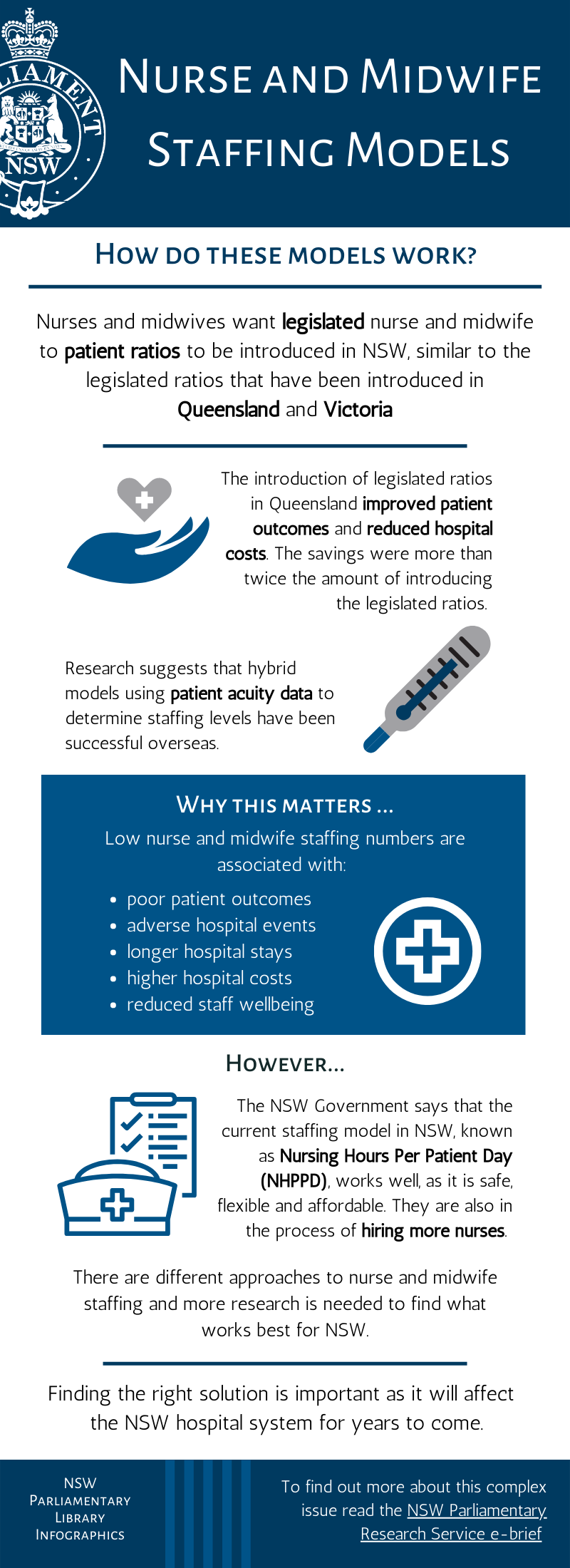Nurse and midwife staffing models are currently a key industrial relations issue in NSW. Nurses and midwives claim that legislated ratios are necessary to ensure patient safety and staff wellbeing. The NSW Government claims that the existing staffing model, Nursing Hours Per Patient Day (NHPPD), is safe, inherently more flexible and affordable. It has also sought to hire more nurses and midwives. While this issue is contested, the underlying context is clear: a large body of research shows that low nurse/midwife staffing levels are associated with poorer patient outcomes, increased adverse hospital events and reduced staff wellbeing.
This e-brief sets out the main features of legislated ratios and NHPPDs, and the manner in which they are applied. It shows where in Australia each model is used and notes that in many States and Territories the NHPPD model is being actively reviewed.
This e-brief also discusses research which found that the introduction of legislated ratios in Queensland was associated with improved patient outcomes and reduced hospital costs. The reduced hospital costs were more than twice the costs of introducing the ratios. Overseas, other (hybrid) models using patient acuity data have proved effective in increasing nurse/midwife staffing levels and improving patient outcomes. An ACT discussion paper recommended the adoption of such a hybrid model.
As the research discussed in this e-brief shows, while this issue may have more than one solution, the outcome of the debate concerning nurse and midwife staffing models will have a significant impact on patients and the NSW public hospital system for many years to come.

